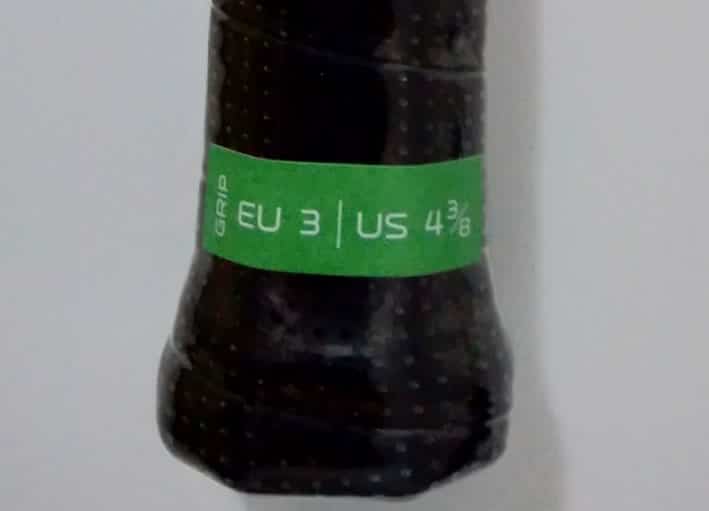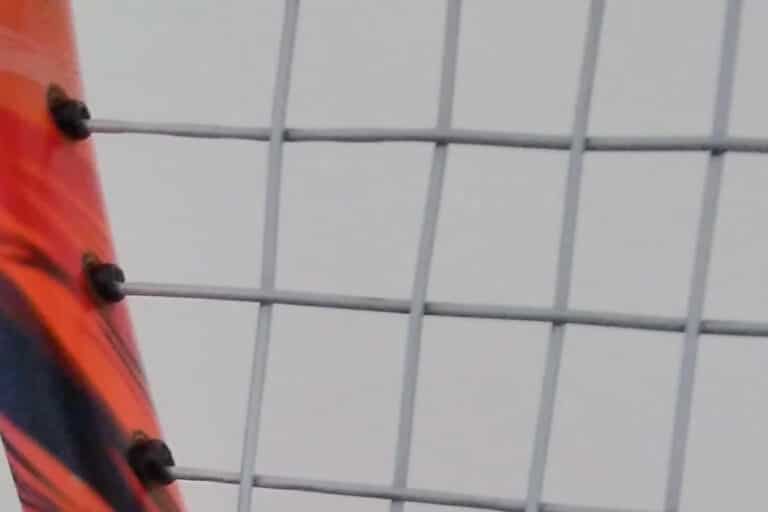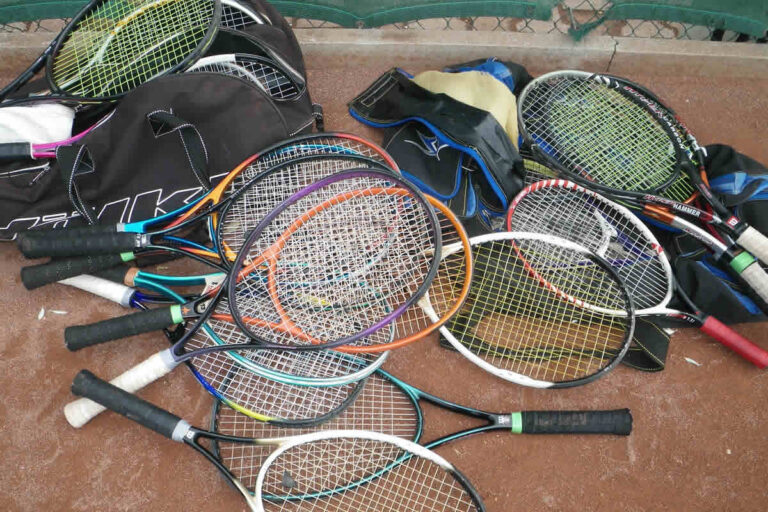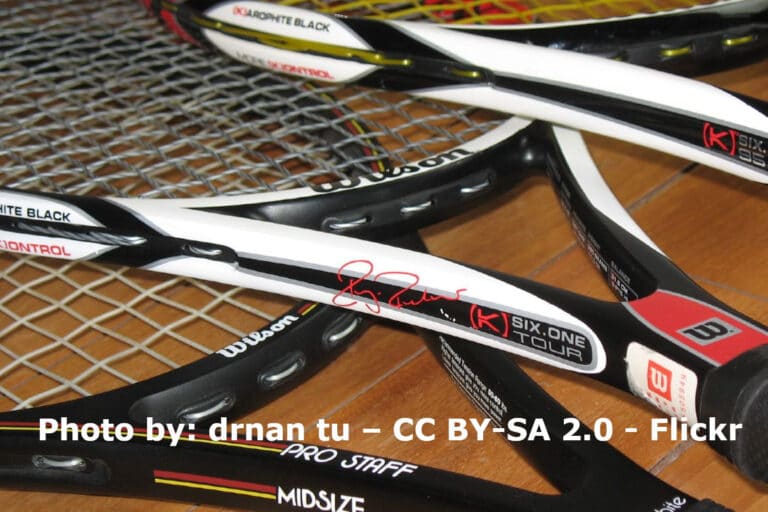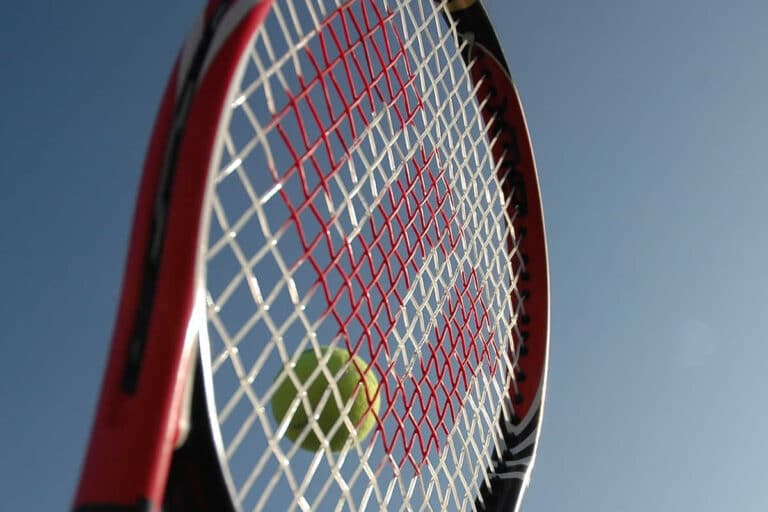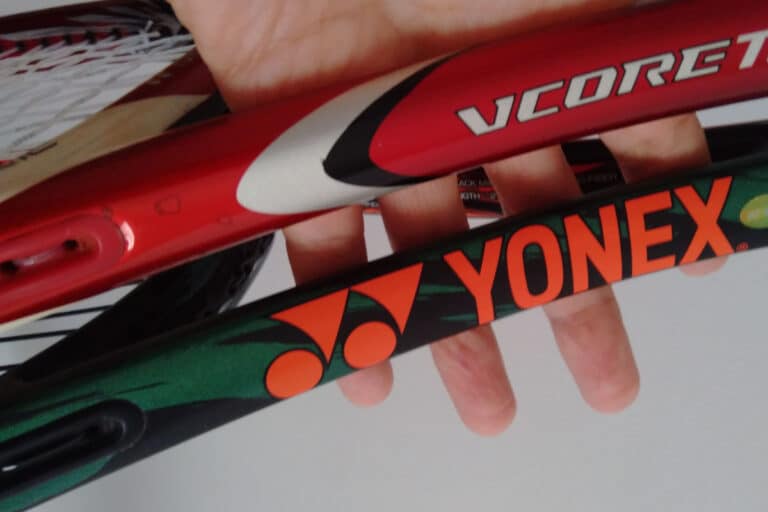Tennis Grips and handles: Size, materials and what Pro’s use
In this Post I compiled some information’s and definitions about the handle of a Tennis racket, grip and the kind of grip the Pro’s use.
At first all the names used for Tennis equipment’s seems complicated, but after a while you get used to it, I hope I can help you, that is just learning more about this sport, to comprehend better.
Difference between handle and grip in Tennis: The handle on a Tennis racket is where the player holds the racket with the hands, sometimes is called grip, but grip is also the name of the tape that is put on the handle.
When someone talk about size of the grip, is probably the diameter of the handle and not the size of the tape, this is because the tape has normally the same size and if not, the difference doesn’t matter much.
Overgrip is the name of a tinner tape that is mostly put on the top of a replacement grip or simple grip.
What are tennis racket handles made of? The handle of a graphite Tennis racket is made of the same material the head of the racket is made and another material like polyurethane on top of it. The wooden rackets have a handle made of wood, some graphite rackets have other materials in the handle, but is rare.
How long is a tennis racket handle? A racket with 27 inches has a handle of about 8 inches, you could expect the handle to be bigger for extended rackets, models that are 27.25, 27.5 or even 28 inches.
The longer the handle of a Tennis racket, the best is for who have large hands and use the two-handed backhand.

In the image above you can see me measuring the handle length of my two rackets, you can see the difference are little for rackets 27 inch long, even when they are from different companies, Yonex and Wilson.
Can you double grip a tennis racket? Yes, in fact, some pro’s use more than one overgrip on the racket, this happens mostly with men’s that have big hands.
I am a woman and my hand is smaller than most men’s hands, and I tried this once on my L4 racket to test, in my case I did a radical test, I’ve removed the replacement Grip and used just overgrip, with just 2 overgrip is very uncomfortable, so I used 3 overgrip without the replacement Grip.
With 3 overgrips I could use the racket and kind liked the feeling, but the problem is when you need to change the first overgrip, the overgrip below is damaged and at the end, I had to remove all three overgrips and this cost a lot more money than using 1 overgrip and 1 replacement Grip.
Why are Tennis Players Using Smaller Grips?
Back in the old days, the size of the grip of a racket was bigger than is today, that’s mainly because the rackets were made of wood.
The grip size turned smaller with the graphite rackets and over the years a lot of Pro Tennis players started to use a smaller grip because it helps with TopSpin and the serve pronation. Nadal for example uses a L2 grip which would be small for a hand of an adult man with his height.
Is it good to use a smaller grip size? Yes, if the grip size is not too small for your hands, a bigger grip size is recommended for Tennis players that like to use a lot of flat shots, but in the modern game of Tennis, using spin is better and a little small grip helps with these kinds of shots.
Just be careful to not use a too small of a grip, if you feel that your fingers are touching your hands when you grabble the handle, is better to increase your grip size, this could bring you discomfort and even cause lesions.
On the time of wooden rackets, the grip was bigger and this was good because the players mainly used continental grip to go to the net and use flat shots, after all the wood is much heavier and it would be difficult to use TopSpin.
When you go shopping for Tennis racquet for small hands, search for the size 4 1/8 (L1), this one is easier to find than thinner sizes.
Other thing that changed over time is the weight of the racket, take a look on the research I’ve made about the average weight of pro Tennis rackets here in the blog.
Pro Tennis Players That Use or Used a Western Grip
The Western grip limits too much your movement and is definitely not the best option for recreational Tennis players, even on the professional circuit is not that common to find someone using a Western grip.
Some players have an extreme Western grip, this means they use a Western grip but with the hand more distant from the semi-Western grip.
On the pros Tennis circuit, you will often find players with extreme semi-Western grip, an example is the grip Djokovic uses, is not a full Western but is very close to the Western, way more than a regular semi-Western grip.
Some players that use or used the Western grip:
- Alberto Berasategui (extreme Western grip)
- Amélie Mauresmo
- Anke Huber
- Anna-Lena Grönefeld
- Barbara Paulus
- Cici Bellis
- Coco Gauff
- Dinah Pfizenmaier
- Ernests Gulbis
- Gisela Dulko
- Igor Andreev
- Iroda Tulyaganova (extreme Western grip)
- Jack Sock
- Jeremy Chardy
- Jim Courier
- Karen Khachanov
- Kei Nishikori
- Kyle Edmund
- lleyton Hewitt
- Paola Suarez
- Peter Luczak (extreme Western grip)
- Philipp Kohlschreiber
- Robin Soderling
- Sloane Stephens
- Thomaz Bellucci
- Timea Bacsinszky (extreme Western grip)
- Tina Pisnik
- Vera Dushevina
Difference between a semi-Western grip and full Western grip. The semi-Western grip is a mix of the Eastern and full Western grip, you can put more spin on the ball but not as much as the Western grip and you can deal better with low balls with a semi-Western compared to a full Western grip.
On the handle of the racket the semi-Western grip is in between the Eastern grip and Western grip.
A lot of pros use the semi-Western grip, because the modern game is all about spin and this grip give you a good amount of spin without limiting too much your movement.
Djokovic and Nadal are some of the examples of pro tennis players that uses the semi-Western grip.
If you are also curious to know what brand and model of racket the Pro’s use, click here to read another Post I made listing the ATP players rackets and click in this other link here to know the rackets WTA players use.

